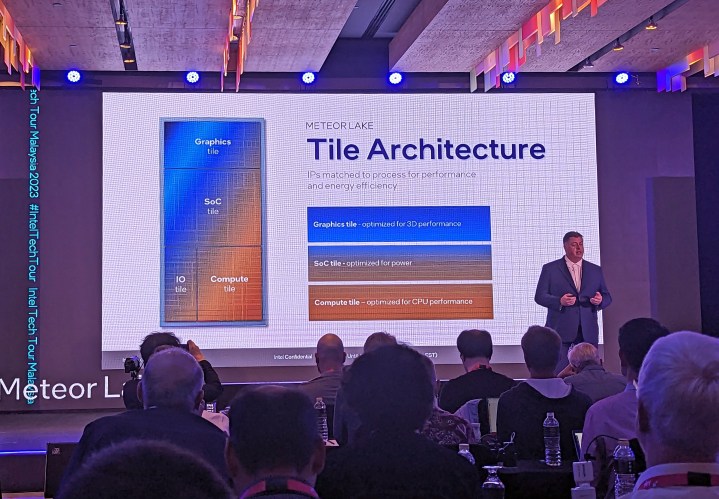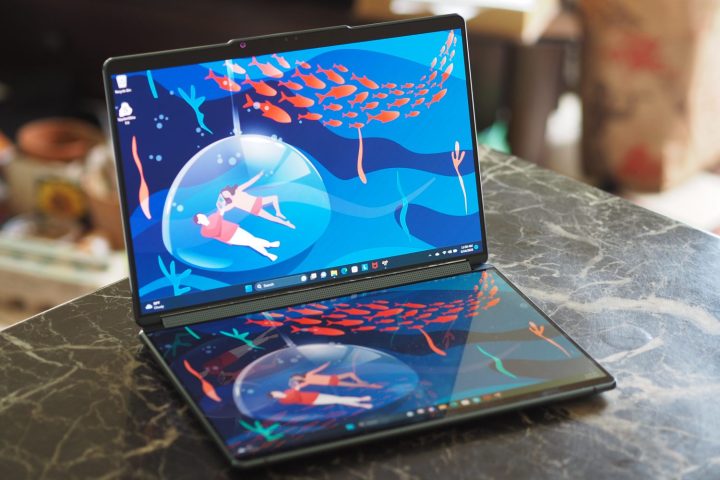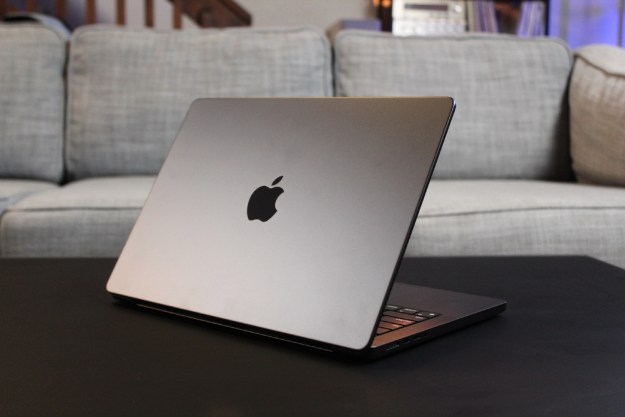
While 2023 was a relatively quiet year for laptops, 2024 is going to be a shake-up. With everything from AI chips to an embrace of ARM, we’re about to see some things come to fruition that have been bubbling in the background for years. Even PC sales are expected to receive a bump as a result of it.
The end result will be
Efficiency looks to make a leap
Apple’s MacBooks are the longest-lasting
Apple Silicon uses ARM technology that’s intimately optimized via macOS to provide incredible efficiency and fast speeds. Until now, Intel has relied on older technology and brute force to improve performance generation over generation, but efficiency has continued to suffer. It’s rare that we review an Intel-based laptop that offers even a meaningful fraction of Apple’s longevity.
That should change dramatically with Intel’s Meteor Lake, the company’s 14th-gen CPUs, which were just unveiled this week. Meteor Lake represents the most significant change to Intel’s architecture in years, incorporating the first 7nm process and a four-tile architecture that integrates a Compute Tile with E-cores and P-cores that are faster and more efficient, an SOC Tile that introduces a Neural Processing Unit (NPU) for power-efficient AI, a GPU Tile with faster Intel Iris Xe LPG graphics, and an IO Tile that fuses

There are numerous technical details involved with Meteor Lake that go beyond the scope of this story. But suffice it to say that if Intel’s promises hold true, Windows
But Intel’s not alone in pursuing faster speeds to go with improved battery life. Qualcomm has announced the Snapdragon X Elite that uses the company’s Oryon CPU and Adreno GPU along with a dedicated NPU. The chip has 12 high-performance cores running at up to 4.25GHz, two cores at a time, with a base speed of 3.8GHz. Qualcomm claims that its 4nm process results in CPU performance that doubles up the Intel Core i7-1260P while consuming 68% less juice. Perhaps more impressive, the Snapdragon X Elite could be 60% faster than the Core i7-13800H while using 65% less power.

If these claims hold true, that would make the Elite X 50% faster in multicore tasks than the Apple M2. That’s not so impressive considering that Apple just released the faster M3, but even so, the Snapdragon X Elite promises to dramatically improve Windows on ARM performance while maintaining the platform’s excellent efficiency.
AI everywhere, literally
I wrote in 2017 that AI was an important technology. My assertion seems quaint today when generative AI has become a dominant news story, if not a dominant technology in practice. But setting aside all the hype, AI promises to make its way into mobile computing in a big way in 2024.
We saw above that Intel and AMD are building NPUs into their chipsets to better support a variety of AI implementations. AMD already did something similar with its Ryzen 7040 Series chips using the company’s XDNA technology.
The big question is, what will these AI technologies accomplish? Intel already talks about AI improving battery life by changing how CPUs transition power states and better matching those transitions to users. Other than some graphics applications, though, AI currently has limited usefulness. That should change, though, once AI hardware exists on
The industry as a whole has a lot to prove in terms of the usefulness of the NPU, especially considering how powerful GPUs are at AI workloads and how much of AI is processed in the cloud. Still, if Intel, AMD, and Qualcomm can leverage relationships with developers to actually use the NPU to speed up a variety of tasks on a PC, that might be the most convincing and seamless use of AI we’ve seen yet.
When will Windows 12 arrive?
It’s only speculation at this point, but the reports have begun to indicate that Windows 12 will arrive sometime in 2024. Rumors abound about what the new operating system might look like, and some of them are particularly intriguing.
First is that Windows 12 might be modular, with editions tailored for specific laptop form factors and specifications. An example would be a version code-named “Next Valley” that would have specific support for Intel’s Meteor Lake CPUs.
Another capability that
Continued form factor evolution

While 2023 was a relatively boring year for
Foldable and dual-screen
Displays should continue to improve in 2024, with OLED, QLED, and mini-LED showing up on more
The most practical trend we saw in 2023, however, was an increase in the number of excellent ,yet highly affordable
Editors' Recommendations
- 6 laptops you should buy instead of the MacBook Air
- PC ports need to be better in 2024 — here’s how
- This was the most exciting gaming laptop I reviewed in 2023
- The best Core Ultra laptops that just got announced
- This was the weirdest, most exciting laptop I reviewed this year


